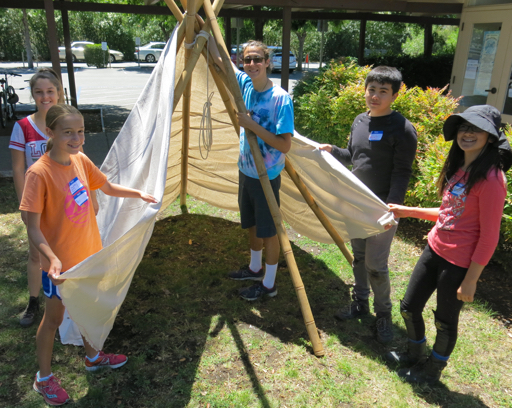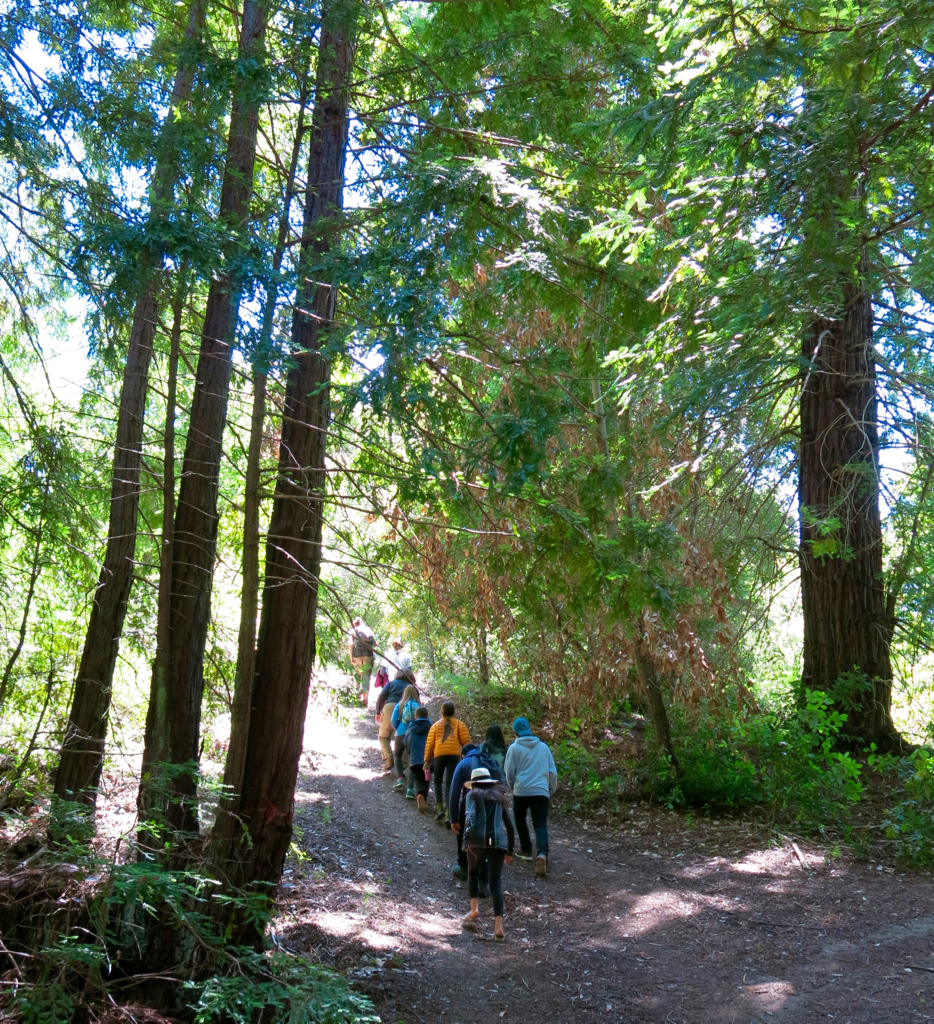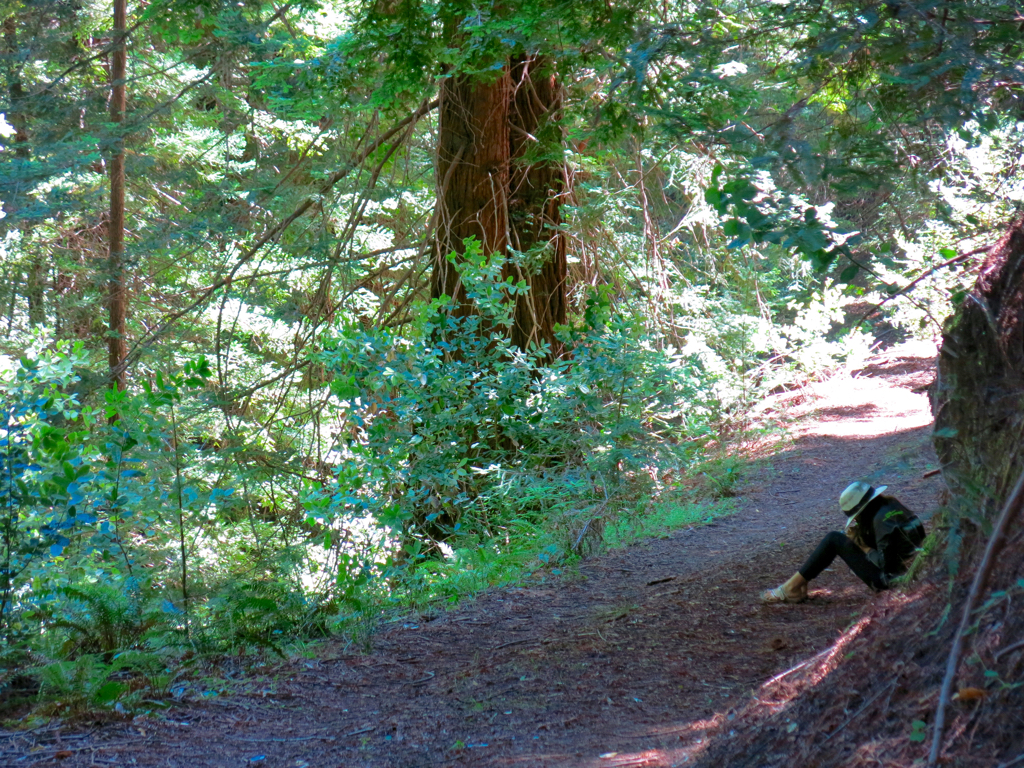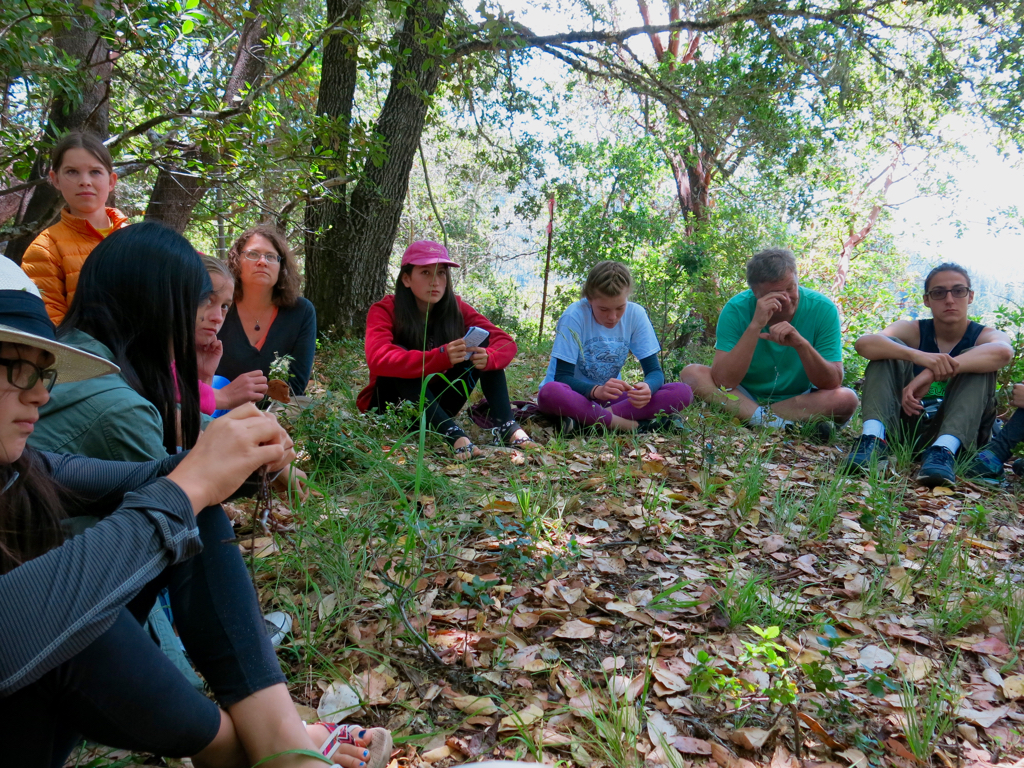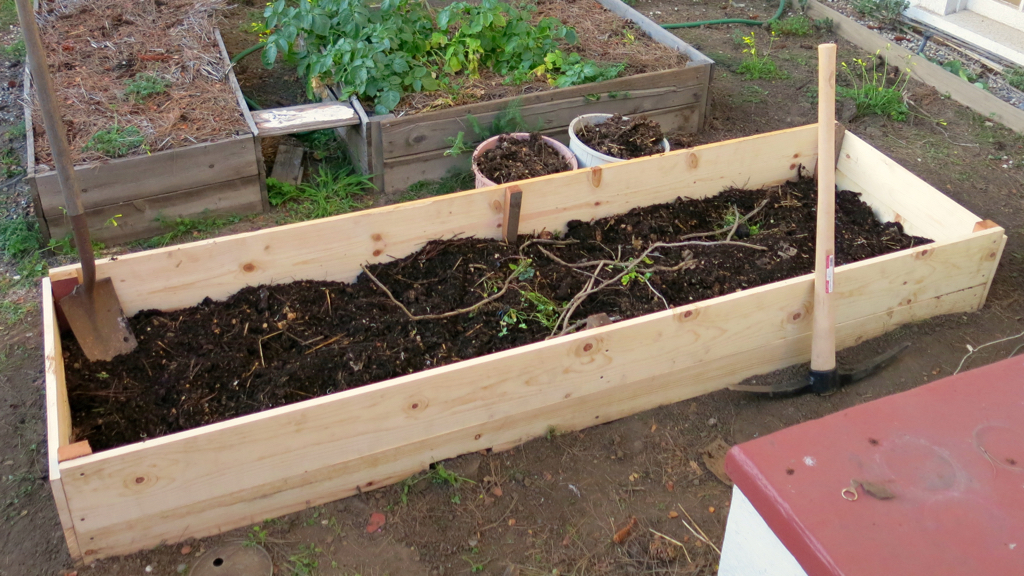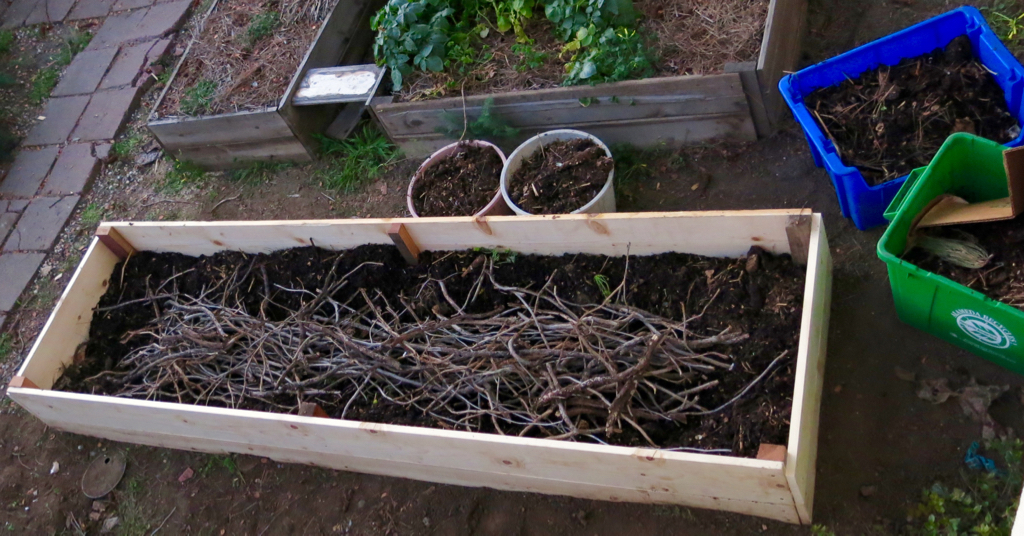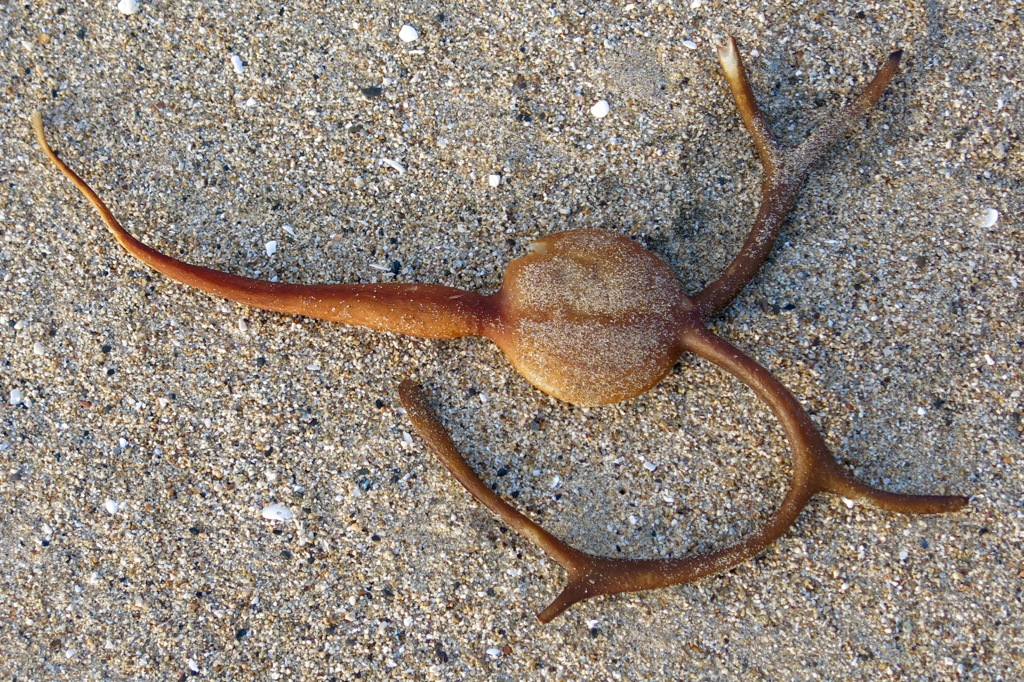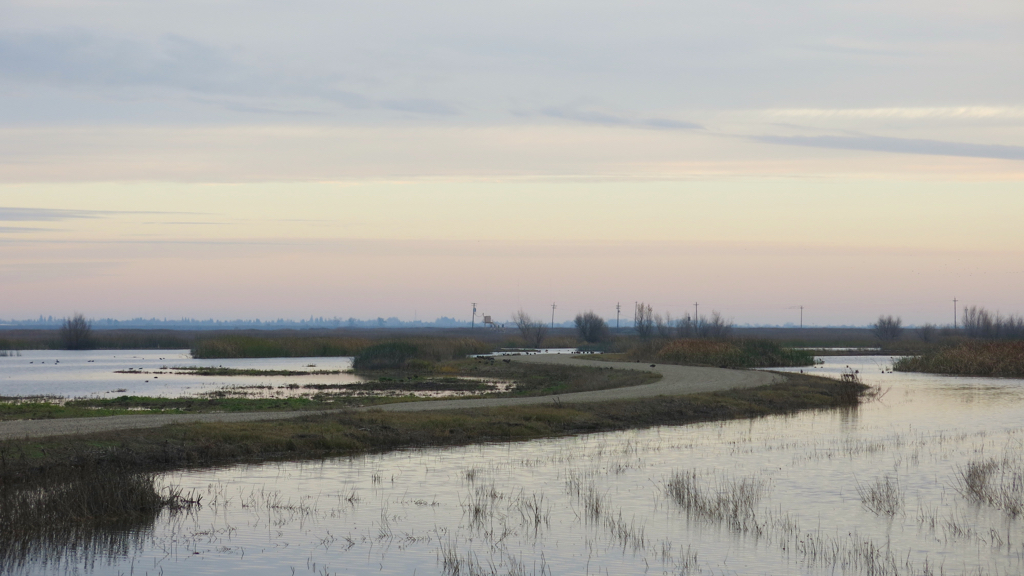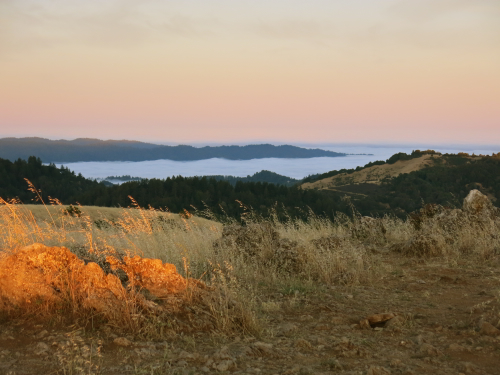It has been a moist winter, and I’ve been seeing quite a few mushrooms walking around San Mateo. Most of the mushrooms I’ve been seeing are small and inconspicuous, but a few days ago I came across a showy large orange fungus in a hidden location. Today I went back and took some photographs:
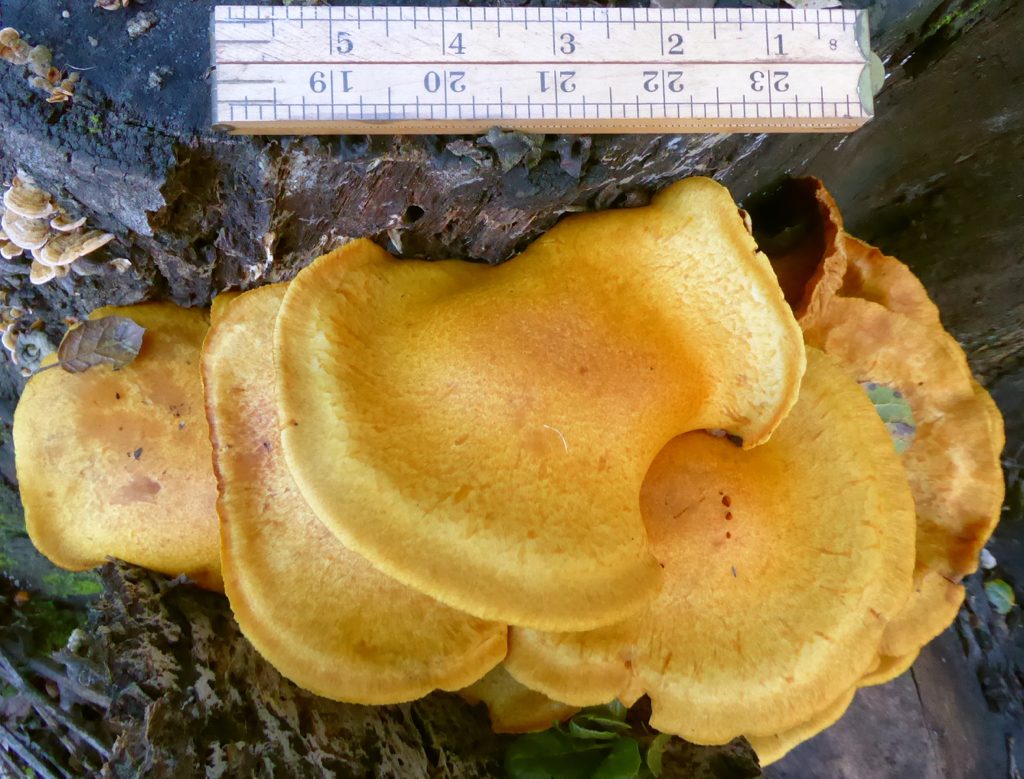
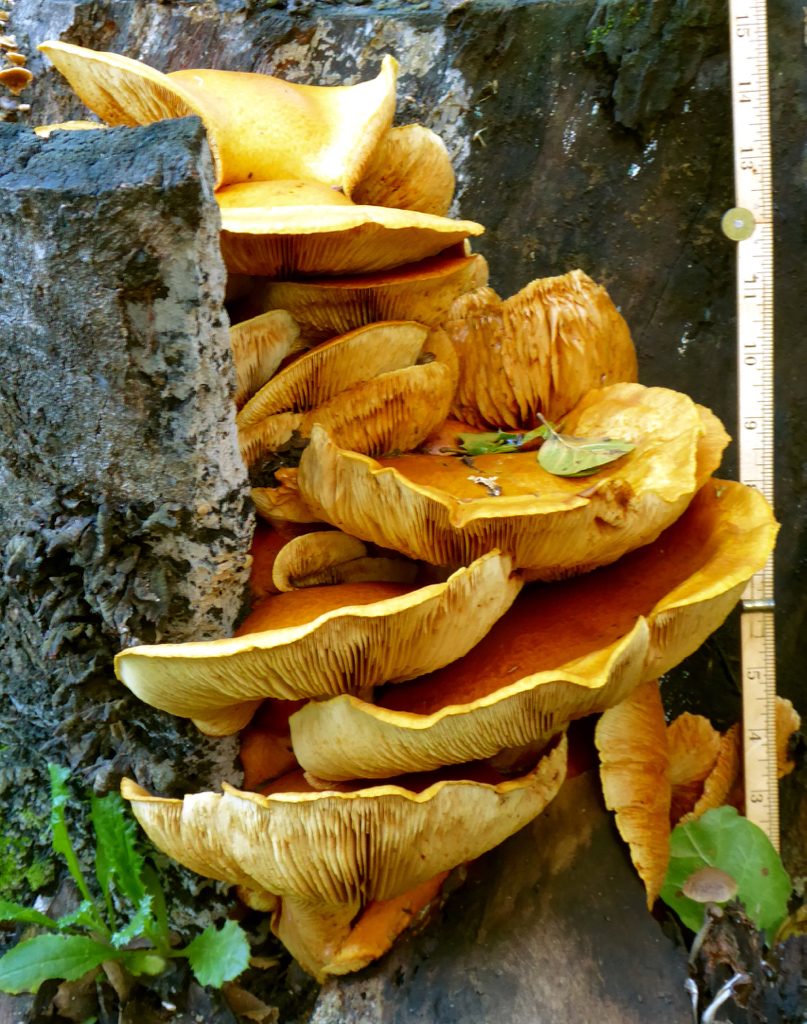
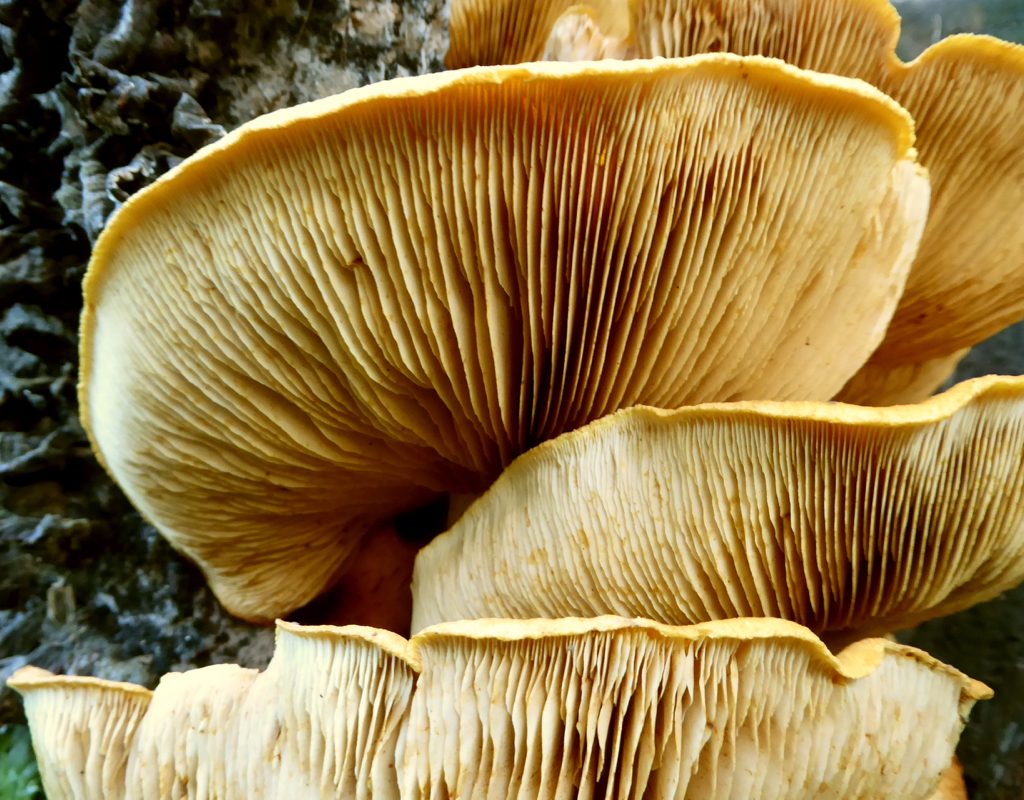
I feel fairly confident assigning this to genus Gymnopilus, given the large diameter of the cap (6+ inches / 15+ cm), its orangeish color, and the fact that it is growing on decaying wood (a rotting stump that could be either a conifer or deciduous tree). Based on the description in A Field Guide to Mushrooms of North America (Kent and Vera B. McKnight, Houghton Mifflin, 1987), and without examining spores under a miscroscope or doing chemical tests, I’ll venture a guess that this is Showy Flamecap (Gymnopilus spectabilus, considered by some to be conspecific with G. junonius); however, this is an uninformed guess on my part, and it could easily be another Gymnopilus species. According to Michael Kuo, “identifying the species of Gymnopilus, in North America anyway, cannot yet be done with scientific accuracy.” (Laura Guzman-Davalos et al. [Mycologia, 95(6), 2003, pp. 1204–1214] found genetic evidence that the spectabilis-imperialis complex represents a clade, but they did not attempt to resolve the distinctions between species within this subgroup of Gymnopilus.) So it’s best to leave the identification as Gymnopilus species.
(Revised on Feb. 4. Written on Jan. 19 and posted on Jan. 25; I held this post for several days, because subspecies of Gymnopilus junonius from the eastern U.S. and Korea may contain psilocybin. I didn’t want some idiot to find this mushroom and, based on my very tentative identification, ingest it hoping for hallucinations. The mushroom in the photographs is now pretty well decayed, so that danger is past.)


